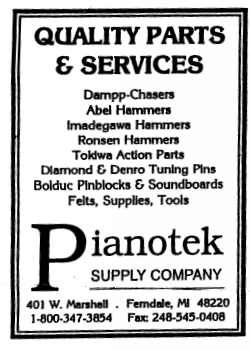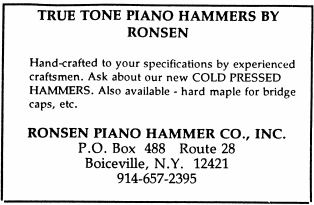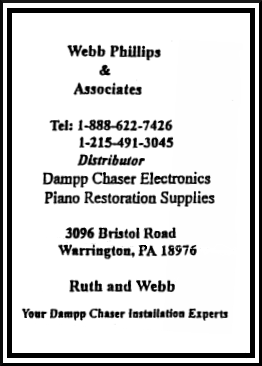|
by Paul Eccardt, Chapter President
Being aware of different ways of repairing or reconditioning pianos can save
you time, money and possibly a headache. Here are some examples of jobs
that aren't cost effective: changing knuckles on a grand, repinning worn out
flanges on an upright, regluing felts and buckskin on old upright butts, repinning
a piano without changing the strings, etc. Sometimes there are exceptions to the
rule. In the case of the knuckles, if you compare the price of knuckles vs shanks,
and the labor of both jobs, you will probably do better with new shanks. Hammers will
likely be needed also. When upright flanges and butts are worn out, its usually cost
effective to replace them. Repinning a piano without changing the strings is hardly
ever worth it, unless the strings are like new, the plate doesn't need painting, and
the tuning pins are loose. When buying a piano for resale, take a good look at how much money and work
must go into it, including moving and advertising costs. After all costs are figured
in, if you make less per hour working on this piano than you do tuning in the field,
you might want to reconsider buying it in the first place.
|
by Michael Slavin, RPT
When creaking noises in the trapwork of a vertical piano seem elusive and difficult to locate and eliminate, do not overlook the fit of the action bolts and action bracket forks. If a bolt does not fit perfectly tight and snug in its fork, the action can have a tendency to flex when the pedal is depressed and the pedal rod rotates the damper rod, creating noise at this joint. An action bolt can easily be adjusted by inserting it in a length of pipe, bending it with the leverage. Apply pressure cautiously, as only a small correction is usually necessary.
|


